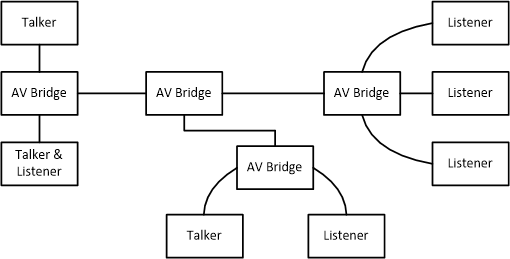-
eAVB Media Clock Synchronization Using CDCE6214-Q1 Clock Generator
- eAVB Media Clock Synchronization Using CDCE6214-Q1 Clock Generator
- IMPORTANT NOTICE
eAVB Media Clock Synchronization Using CDCE6214-Q1 Clock Generator
eAVB Media Clock Synchronization Using CDCE6214-Q1 Clock Generator
AVB (Audio Video Bridging) protocols have been widely adopted to achieve time and clock synchronization over Ethernet, especially in automotive infotainment systems. CDCE6214-Q1 is a compact and ultra low-power programmable clock generator that supports output frequency tuning with less than 1-ppm step size. With the frequency margining capability, CDCE6214-Q1 is ideal for AVB media clock synchronization. This application report introduces AVB system architecture and explains media clock synchronization design with CDCE6214-Q1.
Trademarks
Texas Instruments, is a registered trademark of Texas Instruments.
AVnu Alliance, AVnu are registered trademarks of AVnu Alliance, Inc.
XMOS, is a registered trademark of Acorn Technologies, Inc.
Harman is a registered trademark of Harman International Industries, Inc.
All other trademarks are the property of their respective owners.
1 Introduction
Modern media systems for automotive infotainment and driver assistance are composed of multiple sensors, cameras, displayes, and content players. Point-to-point interconnections with shielded twisted pair or coaxial cables may not be practical for all of the required components. Ethernet is gaining more traction in the automotive audio visual market segment due to its convenience and fast transmission speed; however, standard asynchronous Ethernet networks do not carry clock synchronization information. One of the main goals of AVB protocols is to achieve time and clock synchronization over Ethernet.
Consider the example below where the live or playback audio and video are presented on two RSE (Rear Seat Entertainment) displays and multiple speakers at the same time. Speakers and RSE displays are connected to the Head Unit through Ethernet. For excellent user experience, media content should be lip synchronized, and both audio and video should be distributed to all speakers and displays synchronously.
 Figure 1. Ethernet Time Synchronization in Automotive Infotainment System
Figure 1. Ethernet Time Synchronization in Automotive Infotainment System Two types of A/V synchronization are required:
- The A/V (audio and video) content shall start and stop playing at the same time, which requires a common time reference for multiple events to trigger simultaneously.
- The media content should be sampled and reconstructed at the same rate for high-fidelity A/V systems.
See Section 2, Section 3 and Section 4 to understand how to achieve the two types of synchronization and how the CDCE6214-Q1 device fits in media clock recovery.
2 AVB Protocols and Network Structure
AVB is a family of protocols that include:
- IEEE 802.1AS for time synchronization. IEEE 802.1AS defines generalized Precision Time Protocol (gPTP) profile based on IEEE 1588.
- IEEE 802.1Qav for traffic shaping.
- IEEE 802.1Qat for stream reservation.
- IEEE 802.1BA that specifies defaults and profiles of AVB components. IEEE 802.1BA is an umbrella standard for IEEE 802.1AS, IEEE 802.1Qav and IEEE 802.1Qat.
- IEEE 802.1Q that specifies Virtual Bridged Local Area Networks. IEEE 802.1Qav and IEEE 802.1Qat have been incorporated to IEEE 802.1Q.
- IEEE 1722 Layer 2 A/V transport protocol.
An example AVB system is shown in Figure 2:
 Figure 2. Example High Level AVB Network
Figure 2. Example High Level AVB Network An AVB network consists of three types of components:
- AV Bridges. An AV Bridge is a relay device that conforms to IEEE 802.1BA. It acts as a switch that receives and forwards IEEE 802.1BA compliant data to the destination device.
- End stations. An end station can be a Talker, Listener, or both. A Talker is an end station that is the source, transmitter or producer of a stream. A Listener is an end station that is the destination, receiver or consumer of a stream.
- Ethernet LANs (Local Area Network). Individual LANs interconnect the Bridges, Talkers and Listeners.
To understand more about the AVB end stations see Section 3.